Topics List
Jun. 8, 2016 Updated
Atmospheric balloon experiment B16-02 to capture microorganisms in the stratosphere
|
JAXA released the first atmospheric balloon in Japan Fiscal Year 2016 from the Taiki Aerospace Research Field, which is a base for cooperation between the host town and JAXA, at 3:43 a.m. on June 8 (Wed.), 2016. The purpose of this experiment is to capture microorganisms in the stratosphere. The balloon used this time is a large-size one with a maximum expansion volume of 15,000 cubic meters (33.5 meters in diameter), and it ascended at a speed of 300 meters/minute. * We so far have a few reports about the existence of microorganisms in the upper Earth atmosphere (in the stratosphere and mesosphere) through collecting microorganisms. Understanding the kinds of organisms in the upper atmosphere and clarifying their distribution are very important to learn about the upper end of the Earth’s biosphere. The experiment this time aimed at capturing microorganisms while the instrument to collect them was detached from the balloon and descending by a parachute. After collection, microorganisms and particle specimens in the instrument are to be analyzed. |
 |
|---|
Aug. 24, 2015 Updated
Atmospheric balloon experiment BS15-07 and completion of the first series of balloon experiments in JFY2015
|
JAXA released the balloon “BS15-07” from the Taiki Aerospace Research Field at 5:02 a.m. on Aug. 22 (Sat.), 2015, aiming at verifying onboard instruments and operation of the satellite “EGG”*, which will be deployed from the International Space Station (ISS). The balloon was 11 meters in diameter when it was fully expanded, and it was ascending at a speed of about 380 meters per minute. |
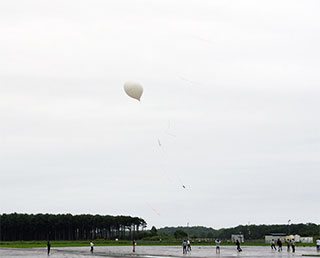 |
|---|
Aug. 7, 2015 Updated
Completion of Atmospheric balloon experiment BS15-03
|
JAXA released the balloon “BS15-03” from the Taiki Aerospace Research Field at 4:12 a.m. on Aug. 6 (Thu.), 2015, for the purpose of cryogenic sampling in the atmosphere at the stratosphere. The volume of the balloon when it was fully expanded was 100,000 m3 (with a diameter of 63.4 m), and it was ascending while gathering the atmosphere of the stratosphere. |
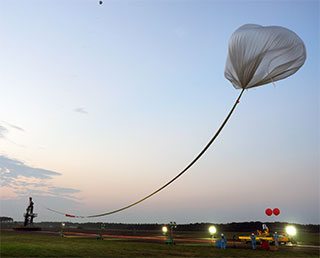 |
|---|
May 15, 2015 Updated
Big balloon experiment in Australia
|
On May 12, JAXA conducted a big balloon experiment in cooperation with some universities including Kobe University and Nagoya University from the balloon release base of the University of New South Wales, Australia. The experiment aims at elucidating the spatial structure of a celestial body and the gamma-ray emission mechanism by attaining high resolution observations using the emulsion gamma-ray telescope of Kobe and Nagoya Universities. |
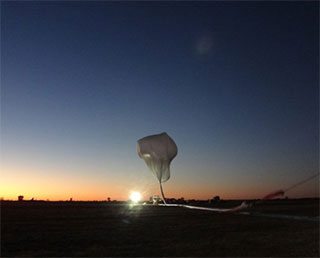 |
|---|
Sep. 9, 2010 Updated
Atmospheric balloon experiment BS10-06 completed
|
At 5:38 a.m. on September 8, 2010, JAXA released the fourth balloon of the second balloon experiment in Japan Fiscal Year 2010 from the Taiki Aerospace Research Field, the base of the collaborative work. The release experiment, called BS10-06, aimed at testing the high-altitude thin film balloon flight performance and observing the ozone and atmospheric gravitational waves. The balloon that was expanded to its full capacity of 60,000 m3 was made of a thin film for high altitude with a thickness of 3.4 micrometers, and it ascended about 300 meters per minute. |
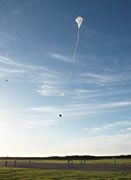 |
|---|
Aug. 30, 2010 Updated
Atmospheric balloon experiment B10-03 completed
|
At 5:41 a.m. on August 27, 2010, JAXA released the second balloon of the second balloon experiment season in JFY 2010 from the Taiki Aerospace Research Field, the base of the collaborative work. The release was part of the B10-03 experiment which aims at flying a bale (or a straw rice bag) shaped balloon. The balloon that was expanded to its full capacity of 5,000 m3 ascended 250 meters per minute. |
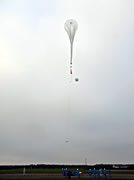 |
|---|
Aug. 23, 2010 Updated
Atmospheric balloon release experiment B10-02 completed
|
At 5:12 a.m. on August 22, 2010, the B10-02 balloon, which aims to acquire cryogenic samples from the stratospheric atmosphere, was released from the Taiki Aerospace Research Field, the base of the first collaborative work for the second balloon experiment session in JFY 2010. The B10-02 is a large balloon with a full expansion volume of 100,000m3. It was ascending while taking samples from the stratospheric atmosphere. |
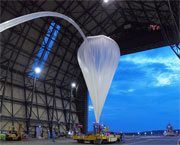 |
|---|
Aug. 17, 2009 Updated
BESS-Polar project receives NASA Group Achievement Award
|
The Balloon-borne Experiment with a Superconducting Spectrometer (BESS-Polar) project received the NASA Group Achieving Award. The project aimed at observing cosmic particles using a superconducting spectrometer installed on a balloon that circulated around the Antarctic. The first experiment was carried out in 2004, and a balloon circled above the Antarctic observing cosmic particles and rays. After the first experiment, the observation device was upgraded, and between December 2007 and January 2008, the second experiment was conducted. The balloon launched from the U.S. MacMurdo Base made almost two cycles above the Antarctic taking about 30 days, and observed 4.7 billion cosmic ray phenomena. Among them, the experiment detected over 8,000 phenomena of low-energy cosmic ray antiproton. The award this time was given for the development of the BESS-Polar observation device, which led to the global-leading investigation method of cosmic antimatter, and the successful 30-day balloon project. |
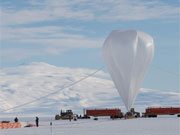 |
|---|
Comments are closed.